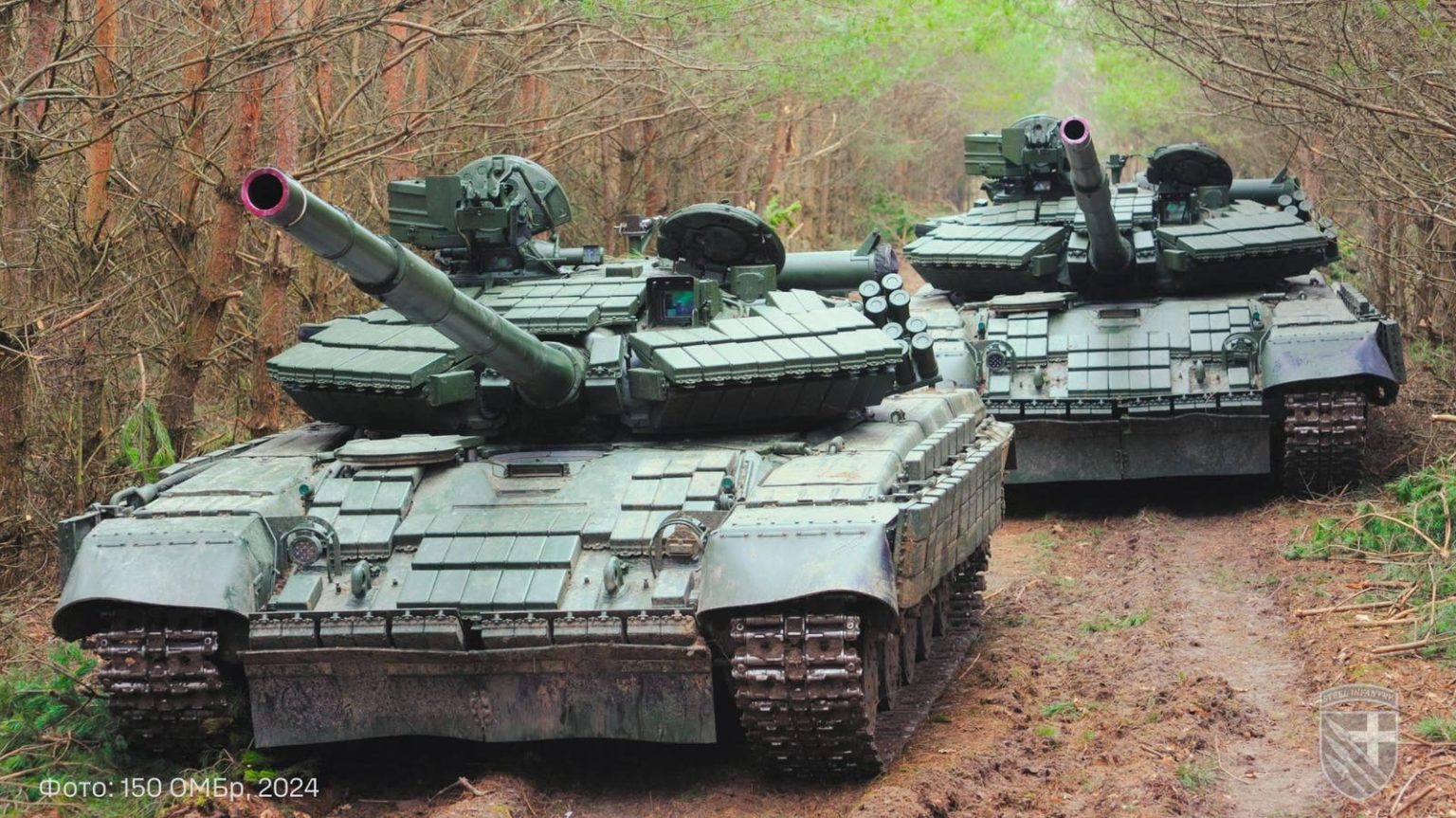Back in October, the Ukrainian army formed a new brigade—the 150th Mechanized Brigade—as part of a small-scale mobilization meant to reinforce the roughly 100 brigades then in the Ukrainian ground forces.
The formation of a new brigade isn’t particularly special. In the 28 months since Russia widened its war on Ukraine, both the Ukrainian and Russian militaries have stood up new regiments and brigades while also assigning newly mobilized troops to existing units as replacements for battlefield casualties.
Organizing new brigades with their own staffs and support troops allows planners to rotate entire battle-weary formations off the front line so all their soldiers—infantry, logisticians and commanders alike—can rest and retrain.
What’s notable about the 150th Mechanized Brigade is its equipment—in particular its upgraded T-64BV Obr. 2017 tanks. More than two years into Russia’s wider war, even after losing hundreds of tanks to Russian mines, artillery and drones, the Ukrainians are still generating fresh T-64s.
That’s a good sign as the wider war grinds into its third year. The Ukrainian military has been struggling to acquire enough infantry fighting vehicles and armored personnel carriers—battlefield taxis for infantry, basically—but at least it’s got enough tanks.
The T-64 is a Cold War classic—a 42-ton, diesel-fueled tank with hundreds of millimeters of armor, three crew and an automatic loader for its 125-millimeter main gun. The Malyshev Factory in Kharkiv, in northeastern Ukraine just 25 miles from the Russian border, produced new T-64s between 1963 and 1987.
When the Soviet army left Ukraine starting in 1991, it left behind thousands of T-64s—as many as 3,000, by one estimate. The Malyshev Factory upgraded around a thousand of the tanks for ongoing service alongside newer T-72s and T-80s. Exactly what happened to the remaining T-64s is a matter of speculation—and the likely explanation for the ongoing supply of seemingly newly-upgraded T-64s to units such as the 150th Mechanized Brigade.
When Russian troops invaded Ukraine’s Crimean Peninsula in 2014, the Ukrainian defense ministry began pulling old T-64s out of storage at vast vehicle parks across the country. That reclamation almost certainly accelerated a lot when the war widened in 2022.
The Malyshev Factory suffered serious damage in the early weeks of the war, but Ukrainian industry adapted—dispersing existing industrial equipment and establishing new workshops in less vulnerable cities. At the same time, Kyiv inked deals for the repair and upgrade of T-64s at sites in Poland and the Czech Republic.
The expansion and partial outsourcing of the Ukrainian tank industry help explain why, after losing around 300 T-64s in combat, the Ukrainian military still has enough T-64s to maintain existing brigades and equip new ones.
It’s telling that the Czechs haven’t yet received a single T-64 from the Ukrainians—apparently because workers in Ukraine and Poland are currently meeting the demand for T-64 overhauls. In other words, Ukraine may have excess T-64 infrastructure.
Still, every “new” T-64 is an old hull with modern optics and fire controls, so the T-64 is—in a sense—a finite resource. The tanks will eventually run out.
But not anytime soon. On average, Ukraine has lost a hundred T-64s a year for nearly three years. If half the T-64s the Soviets left behind in the 1990s were recoverable, the Ukrainians might be able to repair and upgrade a few hundred more T-64s—enough for several more years of hard fighting.
Coincidentally, the Russians—who also largely depend on the regeneration of older tanks to replace front-line losses—may also have enough tanks for several more years of major combat.
It’s worth noting that both countries have alternative sources for replacement tanks. Russia builds them new at a rate of 500 or 600 or so a year. Ukraine has received nearly 700 tanks from its allies—and is set to receive another 300 or so in the coming months. Longer term, Ukraine is in talks with a German firm to set up local production of a German tank design.
For a while, however, those hundreds of T-64s—Cold War leftovers—should continue to give Ukrainian brigades much of their heavy firepower.
Read the full article here





